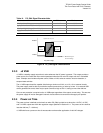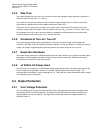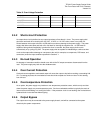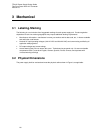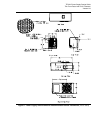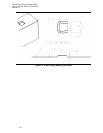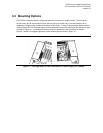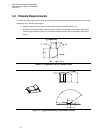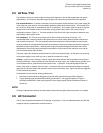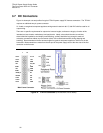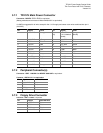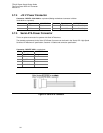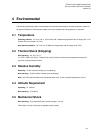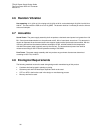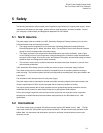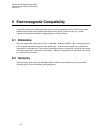
TFX12V Power Supply Design Guide
Thin Form Factor with 12-V Connector
Version 2.0
3.5 Airflow / Fan
The designer’s choice of a power supply cooling solution depends in part on the targeted end-use system
application(s). At a minimum, the power supply design must ensure its own reliable and safe operation.
Fan location/direction: In general, exhausting air from the system chassis enclosure via a power supply fan
is the preferred, most common, and most widely applicable system-level airflow solution. The location of the
fan can have a large effect on how efficiently this air is exhausted. The location of the fan shown in Figure 9
allows the fan to be located close to the processor cooling solution when used in the common fan left
configuration shown in Figure 11. This close proximity of the fan will aid in the evacuation of heated air and
helps keep the total system cooler.
Fan size/speed: The TFX12V power supply has an 80 mm axial fan as shown in Figure 9. It is
recommended that a thermally sensitive fan speed control circuit be used to balance system-level thermal
and acoustic performance. The circuit typically senses the temperature of the secondary heat sink and/or
incoming ambient air and adjusts the fan speed as necessary to keep power supply and system component
temperatures within specifications. Both the power supply and system designers should be aware of the
dependencies of the power supply and system temperatures on the control circuit response curve and fan
size and should specify them carefully.
The power supply fan should be turned off when PS_ON# is de-asserted (high). In this state, any remaining
active power supply circuitry must rely only on passive convection for cooling.
Venting: In general, more venting in a power supply case yields reduced airflow impedance and improved
cooling performance. Intake and exhaust vents should be as large, open, and unobstructed as possible so as
not to impede airflow or generate excessive acoustic noise. In particular, avoid placing objects within 0.5
inches of the intake or exhaust of the fan itself. A raised wire fan grill is recommended instead of a stamped
metal vent for improved airflow and reduced acoustic noise for the intake vent. Figure 9 shows the suggested
TFX12V exhaust vent pattern.
Considerations to the previous venting guidelines are:
• Openings must be sufficiently designed to meet the safety requirements described in Section 5.
• Larger openings yield decreased EMI-shielding performance. The suggested pattern in Figure 9
sufficiently shields EMI in most power supplies, but the design should always be tested as outlined in
Section 6.1.
NOTE:
Venting in inappropriate locations can detrimentally allow airflow to bypass those areas where it is needed.
3.6 AC Connector
The AC input receptacle should be an IEC 320 type or equivalent. In lieu of a dedicated switch, the IEC 320
receptacle may be considered the mains disconnect.



